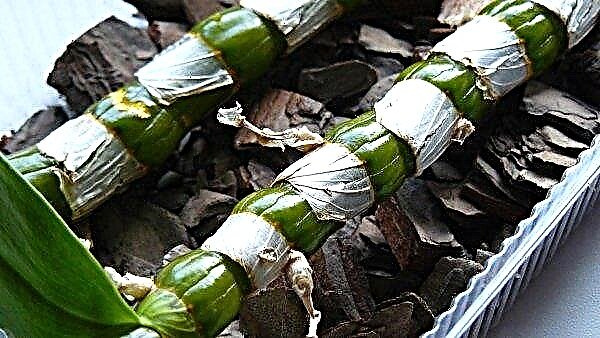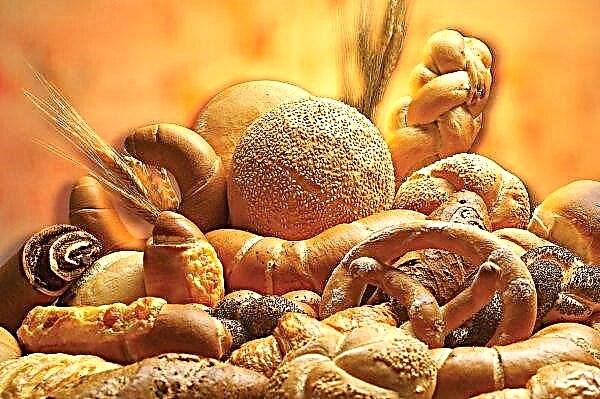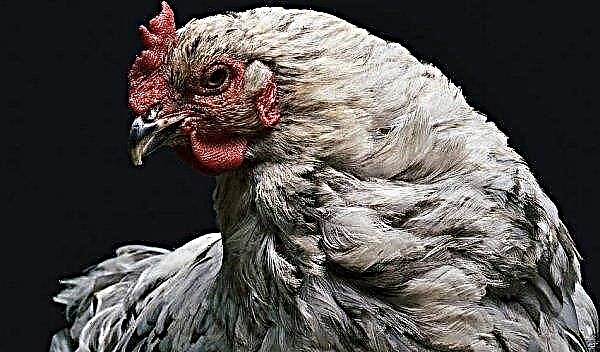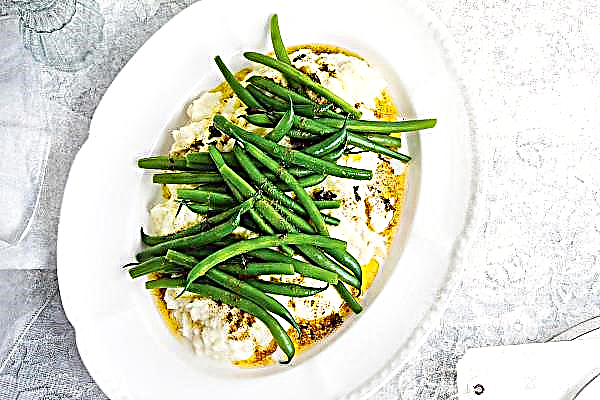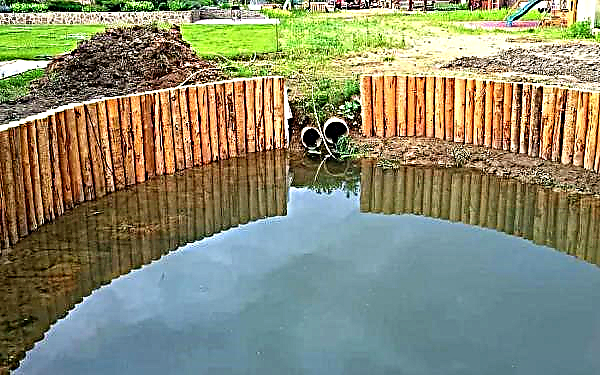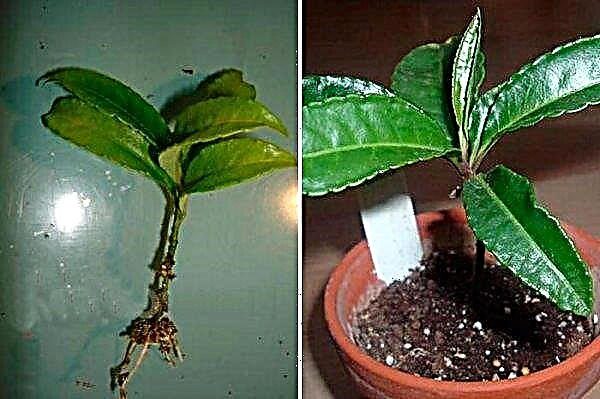There are many beautiful indoor plants, popular and common, but any grower would like to grow something extraordinary. That is why rare exotic flowers that are unusual to see in flowerpots on the windowsill are of great interest. These include jasmine Sambac - an unusual shrub with fragrant buds. How to grow it at home, as well as the variety of varieties of this species will be discussed in the article.
Botanical Description
Jasmin Sambac is a perennial evergreen plant of the Olive family. This is a small shrub, the height of which varies from half a meter to three meters, depending on the variety. The foliage is saturated green, elliptical in shape, smooth with sparse veins, located opposite, in pairs, can also vary in size: length up to 12 cm, width up to 8 cm.
Jasmine flowers are small: 2-3 cm in diameter in the blossomed form, consist of five, less often of seven or nine, petals. Buds are located at the ends of branches in groups of up to 12 pieces. The aroma is sweet, intense, most pronounced when buds open in the evening (after 18:00). The bush continues to bloom throughout the year with interruptions from one to two to three months.
Since the homeland of the plant is tropical countries, in open ground conditions it can be grown only in the southern regions, but indoor content is more favorable for it.
Did you know? For the first time in Europe, they learned about this type of jasmine from Arabs who brought jasmine oil, which they themselves called "zambag". When the plant itself spread, the modified name “Sambac” was attached to it.
Popular varieties
Arab jasmine, aka Sambak, is represented by a large number of varieties, all of them intersect with each other. Due to this integration, it can be quite difficult to classify which subspecies a plant belongs to. Most often, a limited number of varieties are grown at home. What they are called and what are their features will be discussed later.
Arabian Knights
One of the most common varieties is Arabian Knights. It is a rapidly growing shrub, characterized by low demands on conditions. The plant blooms from early spring to late autumn without interruption. The buds with terry petals of the correct round shape exude a sweet strong aroma. It is these flowers that are best suited for making traditional jasmine tea.

Caring for this variety is not too difficult: it is photophilous, but easily tolerates light shading. It grows well in rooms oriented east or south. It requires rare watering and the obligatory presence of drainage.
Important! Despite the moderate moisture loving nature of the Arabian Knights variety, an earthen coma should not be allowed to dry out, this can lead to a stop in flowering.
Grand Duke of Tuscany (Grand Duke of Tuscany)
Jasmine Grand Duke is not only the most unusual in appearance, but also the most moody in terms of care. The plant is a tall (up to 1 m) bush with large dark green leaves and massive bushy flowers. Petals of white color, rounded, with a bright floral aroma.
This variety is sensitive to soil and air humidity; the flower is extremely hygroscopic. Nevertheless, despite the demands, the Grand Duke jasmine, with proper care, can bloom without interruption all year round.

Orleans Maiden (Maid of Orleans)
A small fast-growing liana-like plant is an unusual representative of the Sambac species. The Orleans Virgin rarely grows to large sizes, more often with the correct initial pruning, it forms into a neat bush.

The flowers of this variety, in contrast to those described above, are not double, the petals are single, oval in shape. The foliage is smooth, glossy, ovoid, dark green in color. The peculiarity of the Orleans Virgin is that the buds live after blooming all day, after which they fall, giving way to the following.
Did you know? In India, the scope of jasmine is very wide, while not only flowers, but also other parts of the plant are used. In particular, seasoning for dishes is made from leaves, and freshly added to salads from herbs.
Belle of India
A separate description requires a variety of Sambac Indiana or Beauty of India. It differs from its counterparts at a slower growth rate and unusual flowering. A small bush blooms year-round double white flowers with long pointed petals. The foliage is large, dense, oval with a pointed end, dark green in color. This shrub is unpretentious, likes moderate watering and warmth.

Features of planting and soil preparation
As mentioned earlier, the heat-loving Sambac is best at home at home: on closed terraces, in greenhouses or on the windowsill in the apartment. In order for a plant to grow, develop and bloom, a proper approach to planting and choosing soil is necessary.
So, the soil for jasmine is neutral, with low acidity. At the same time, it should be light, porous, include sand, peat and humus. It is best to use ready-made soil mixtures from the store, this will reduce the likelihood of a flower becoming infected with various diseases. Also, claydite will be needed, which will perform a drainage function, and a capacity for planting.

The container for planting a seedling should not be very large, a container with a volume of 2–2.5 liters is suitable. A layer of expanded clay is poured at the bottom of the flowerpot (about 2 cm), then half is filled with soil, jasmine is planted, sprinkled with the rest of the earth and watered. Young seedlings should be at a temperature of +18 ... + 20ºC far from drafts and direct sunlight.
Home Care
It’s a bit troublesome to take care of Jasmine Sambac, but at the same time the flower gratefully reacts to good conditions with long flowering and a dense crown. Plants love heat, moisture and good lighting, regardless of the time of year. In addition, each of the varieties of this type has its own preferences and reacts differently to external changes. To this end, the basic rules for maintaining and growing shrubs will be discussed in more detail.
Lighting
Like all tropical cultures, jasmine is very photophilous, the growth rate of branches and foliage, as well as the duration and intensity of flowering, directly depend on this. At the same time, Sambak does not tolerate direct rays of the sun, in this case we are talking about midday light. The southeastern side of the apartment is the best place to place a bush. You can also grow it on the windowsill, oriented to the west, but in the presence of slight shading.
The north side and any rooms with insufficient or artificial lighting are not suitable for jasmine. In such places, the plant will not only stop blooming, but may also discard foliage.

Watering and feeding
Organization of watering jasmine is the most crucial task when growing it. Tropical culture loves moisture, but does not tolerate its stagnation in the root area, so the plant is watered often, but subject to several rules:
- the presence of drainage, ensuring the outflow of excess fluid;
- soil condition control: moisten as the topsoil dries up;
- change in the intensity of procedures depending on external conditions: at high air temperature and low humidity, watering is more intense, with the onset of coolness - more rare.
Important! The heat-loving Sambak does not tolerate cold water, so for irrigation and irrigation it is necessary to warm it to a temperature of +25 ... +30ºC.
The described tactics will avoid root decay and stunting. It is better to use soft, filtered or boiled water in order to prevent an excessive decrease in the acidity level of the soil.
In addition, it is worth remembering that jasmine needs high humidity, this is especially important for the Grand Duke variety. To achieve this goal, it is recommended to install an air humidifier in the room where the plant is located. However, this is a rather expensive device, therefore, many flower growers dispense with regular spraying of the crown of a flower from a spray bottle, as well as installing water containers: aquariums, vases, decorative fountains next to flowerpots.
Fertilizing is required for jasmine only during the growing season and rapid flowering. It is recommended to use ready-made liquid fertilizers for flowering indoor plants according to the instructions once every 7 days.

Transfer
Jasmine needs an annual transplant only for the first three years, while there is an intensive development of the root system and crown. Subsequently, the adult plant is transferred to another container every three years as the roots grow (they should fill the pot as much as possible). In this case, the new flowerpot should be a maximum of 2 cm larger than the previous one. If transplanted jasmine in a large container, its growth will slow down. Transshipment is traditionally carried out in spring or autumn, providing the plant in the first weeks after housewarming with increased air humidity and abundant watering.
Pruning
It is known that pruning is a necessary and useful procedure for lianiform plants. As a rule, for the formation of the crown, all shoots stretched upwards are shortened by about half, short processes pinch at the apex. Such manipulations contribute to the thickening of the foliage.
Sambac haircut is usually done several times a year: the first (main) - in the early spring, then at the end of the growing season - in the fall. Pruning of fast-growing shoots in winter is also allowed.

Diseases and Pests
The high sensitivity of indoor jasmine to external conditions is not the only problem in caring for it. Very often, the plant suffers from damage by different types of pests. The most common infections are aphids, scabies and spider mites.
Aphid It is a dangerous pest whose larvae feed on foliage and flower juices. You can find it when examining the leaves, especially their inner surface. When aphids breed, many small greenish or yellow larvae appear.

After the detection of the parasite, urgent measures must be taken:
- quarantine the plant, separating it from healthy flowers;
- wash jasmine foliage with a soapy solution;
- then rinse the crown under a hot shower (+ 40ºC).
If the measures taken have not yielded results, it is necessary to treat the foliage with an industrial insecticide (for example, Akarin) according to the instructions. It is advisable to repeat the treatment two more times at weekly intervals.
Shield - Another pest that can destroy Sambac. These are flat light brown bugs that feed on the juice of a flower. You can detect them by visual inspection, they are often placed on the inner surface of the foliage and in the bends of the stems. In addition, it is possible to determine the defeat of this parasite by the presence of a sticky coating on the leaves.
 The treatment is the same as in the case of aphids, but, as a rule, a single application of the insecticide is enough.
The treatment is the same as in the case of aphids, but, as a rule, a single application of the insecticide is enough.
Spider mite - The most treacherous enemy of jasmine. Its adults are rare, and cobwebs and laid eggs are easily overlooked on foliage. White puncture points and the appearance of web particles should cause suspicion.
It is not easy to get rid of the tick; the main condition is increased humidity and frequent hot sprinkling. If there is no effect from the measures taken, acaricides (for example, Apollo) should be used according to the instructions with repetition of the treatment after three days.

Jasmine diseases are usually associated with violation of the rules of care, stagnation of water in the soil, dry air, too high or low temperature in the room. Under such conditions, root rot or leaf wilting may occur. It is almost impossible to combat rot; therefore, preventive measures to create favorable conditions are important.
Also, the flower often suffers from chlorosis, lack of magnesium and iron. In this case, the foliage is covered with light spots. The appearance of the first signs becomes the basis for the use of special tools that make up for the lack of nutrients (for example, "Ferovit).

Breeding
Sambak propagates in two ways: by cuttings and layering.
- Cuttings usually begin to harvest between flowering - in the summer. Immediately after cutting, they are planted in separate small containers filled with a substrate (soil mixture + sand in equal parts) to a depth of 2 cm and watered, maintaining a constant soil moisture. When kept in a room with a temperature of + 20 ... + 22ºC, the shoots take root within 30 days.

- Layering It is easier to propagate jasmine, but the plant does not always respond adequately to these attempts. To do this, you need to make a vertical incision in the selected shoot in the internodes. Then deepen this part into the substrate and moisturize regularly. If there is enough moisture, then the layers will take root after a month.





